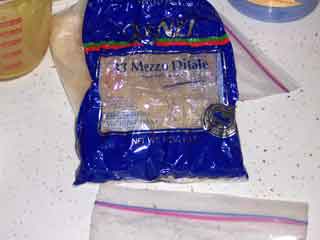Also, remember that rutabagas always take twice as long to cook as you think they should! I’m not sure why - maybe it's because I hated them as a child and they're now exacting revenge. More likely, the starches in the rutabaga just take a lot longer to break down into sugars than other starches. Who knows . . . But we love rutabagas - with roast poultry especially, and in soups and stews as well. Yes, they're a strong flavor, edging towards the bitter. But cooked just long enough, and smashed with some butter, oh, they're as sweet and rich as your heart could wish.
here's what you'll need . . .
rutabaga
salt
Tellicherry
butter
Here's how you do it.
When doing rutabaga, I always try to cut the thing in half before I try to peel it. Get your sharpest, heaviest, longest knife, or your cleaver or Chinese knife, if you have one. Set the rutabaga on your cutting board in whatever position it will sit quietly. That may be on end, if the ends are flat enough, or it may be on one side - whichever side it rolls to naturally. If you have the cleaver or Chinese knife, and are fearless using it, give the ‘baga a good whack. You might get halfway through it or so.
But head start or not, just lean down on the knife and rock it back and forth, a little bit at a time. (Remember that a knife blade cuts on motion, not on pressure; so keep the blade moving.) Sometime within the next week or so, you will succeed in cutting the thing in half. If you're using the basic chef's knife, well, try to thunk it into the 'baga at least a little way before leaning and rocking.
Whichever knife you use, do try to keep an eye on the direction of your cut - it will be nicer if you get a reasonably straight line through the veggie. With a flat side and the sharp edge of your cut, you have half a chance of something to grip while you take your peeler and remove the skin. Do peel deep enough to get all the skin off.

You can use your peeler to whittle off the stem ends, or wait until you've cut the half into pieces, and then trim off the tougher, darker bits at the stem ends. Once peeled, whack the hunks up into 2" pieces (or so, but bigger tends to be better than smaller, just because you're going to cook them forever). Toss 'em in a pot, cover with water, and cook 'em slowly forever. (Yes, you can add some salt, if you must.)

The ones below have been on for about 20 minutes. They’re not boiling. They’re just barely bubbling. Notice the pale yellow color.

An hour and 20 minutes later, and they’re starting to get done. See the change in color from before?

And here they are after about 2 ½ hours of cooking. These are just about done. They’ve gone from light yellow to dark yellow to an almost orange color (similar to a yam). That’s when you know they’re ready. ‘Course, you could always just, well, taste one!

Just remember, the longer they cook, the sweeter they get, and the easier they will be on your digestion, too!
When they're cooked, drain 'em, and dry 'em out for a minute or three. Throw in a hunk of butter, and smash them up with your potato masher. We like ours pretty lumpy, so it only takes a minute to smash them; if you're wimpy, you can try to get them to whipped potato consistency - but you'll never quite succeed because the texture of the basic vegetable is different from a potato. When you're done beating on them, toss 'em in a bowl, grind a little pepper on top, and chow down.





